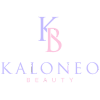
Every day, your skin has to deal with strong sun, humid climate and dry heat. With sudden weather changes especially in Australia, it's super important to have a good skincare routine to avoid common skin problems.
It’s not just for glowing skin, it’s a need for your skin protection. A recent study proves that if you make a consistent skincare routine, you get hydrating and youthful skin.
Without a routine, your skin accumulates dirt, your pores clog and skin easily reacts to common skin problems. Over cleansing, skipping SPF or layering the wrong products can lead to irritation or breakouts especially in Australia’s high UV climate.
In this article, you’ll learn how to build a simple and effective skincare routine. We will also cover the right steps and tips based on your skin type.
Identify Your Skin Type

To build the right skincare routine, you need to have the knowledge about your skin type and needs. Start observing your skin like how it behaves throughout the day.
If your face feels greasy or shiny especially around the forehead, nose and chin then you have oily skin. On this skin, enlarged pores and frequent breakout are common to have.
Do you feel your skin feels tight, rough or flaky after cleansing? Then you have dry skin. It may also look dull or textured in natural light.
If some areas, like your T-zone, feel oily while your cheeks feel dry then you probably have combination skin. This type needs a more balanced approach.
If your skin is often having redness and stinging and when you try new products, your skin feels itchy then you likely have sensitive skin.
Here is how you can check your skin type:
After cleansing your face, leave it bare for one hour; no products at all. Then check how it feels.
|
Skin Feel After 1 Hour |
Skin Type |
|
Shiny all over |
Oily |
|
Tight or flaky |
Dry |
|
Oily in T-zone, dry on cheeks |
Combination |
|
Red, itchy or easily irritated |
Sensitive |
10 Steps to Build a Skincare Routine
When we advise you to build an effective skincare routine, it doesn’t mean that you start using every product on the shelf. We will share a smart 10 step plan that can support both AM and PM routines according to your skin type.
Here are the simple steps to start a good skincare routine:
Step 1: Cleanser

A good cleanser has properties to clean dirt, sweat and makeup residue from your skin. You need to buy a gentle and pH-balanced cleanser so that it won't strip natural oils from the skin.
In the morning, cleanser is essential to prep your skin. At night, it clears out pollution, sunscreen and makeup. For oily skin, try gel based formulas. For dry or sensitive skin, you should try cream or foam cleansers.
Pro Tip: Avoid bar soaps. They often disrupt the skin barrier.
Step 2: Toner

Your skin must rebalance after cleaning. That is why you need to include a toner in your skin care routine. It preps your skin. In case you have oily skin, you must choose a toner that contains such ingredients as hazel and niacinamide.
If you have dry skin, your skin needs a hydrating toner that contains ingredients such as hyaluronic acid and rose water.
Note: You should always pick a toner with alcohol free formulas.
Step 3: Serum (Morning: Vitamin C / Night: Retinol)

Serums can penetrate deep in your skin and provide the essential nutrients to it. Vitamin C serum is effective for daytime. It makes the complexion brighter and combats oxidative stress.
To use at night, select a retinol serum or niacinamide. Sensitive skin people, please avoid applying pure Vitamin C. You can use MAP (Magnesium Ascorbyl Phosphate).
Tip: Always patch test serums. They can cause reactions if you don’t use it according to your skin needs.
Step 4: Spot Treatment (if needed)

If you are having acne or pigmentation or itchy skin then you need a targeted skin treatment. Apply these treatments before moisturising.
Try ingredients like benzoyl peroxide for acne or azelaic acid for post acne marks. Don't apply on the whole face, apply only on affected areas.
Warning: Never mix high potency such as retinol and acids at the same time except under a dermatologist recommendation.
Step 5: Eye Cream

The area around your eyes reveals the first signs of aging. The skin area is sensitive and thin so it easily gets fine lines. Always keep your eyes moisturised.
Use an eye cream containing such ingredients as peptides, caffeine or hyaluronic acid to moisturize and tighten the area.
In the morning, you should try a cooling eye gel. At night, a richer cream will provide a soft and moisturising effect.
Application Tip: Dab, don’t rub and always use your ring finger to apply.
Step 6: Moisturizer (AM and PM Differences)

Moisturizer protects your skin barrier and makes the skin soft. For morning, you should buy a lightweighted cleanser that has a non greasy formula. You can wear this moisturiser under sunscreen or makeup.
At night, try a richer cream so that your skin repairs while you sleep. Even oily skin needs a moisturiser. If you skip moisturiser in your routine, your skin may overproduce oil.
Reminder: You should always apply moisturizer to damp skin for better product absorption.
Step 7: Sunscreen (AM Only)

If there is only one skincare product you can choose in your skincare routine, it should be sunscreen. It protects your skin from UV rays which is the cause of pigmentation, aging and skin cancer. Buy broad spectrum SPF 30 or higher.
You should always wear sunscreen everyday even when you are indoors. After moisturising, put on sunscreen.
Reminder: When you are outdoors, you should always reapply sunscreen after every 2 hours.
Step 8: Exfoliator (1–2 Times/Week)

Exfoliators deeply clear your skin and remove dead skin cells from it. It cleans the pores so that your skin can glow more. You should try gentle exfoliants like if you have oily skin choose BHAs. For dry skin AHAs exfoliator is a better option.
Never over exfoliate your skin it can damage your skin barrier. Using it 1 or 2 times a week is enough.
Warning: Don’t exfoliate on the same day as retinol or other strong activities.
Step 9: Face Mask (Optional, Weekly)

Face masks provide intense hydration, detox or lightening to your skin. Use face masks according to your skin needs.
Apply a moisturizing mask for dry skin or clay mask in order to clean pores and reduce oil. Use after cleanser and before moisturiser.
Pro Tip: Don’t leave it on longer than directed. Overuse can lead to irritation.
Step 10: Face Oil or Night Cream (PM Only)

This is your final nighttime step. A face oil or thick night cream seals in all previous layers and supports overnight skin repair. If you are aged or have dry skin, this step should be definitely added to your skincare routine.
You should try nourishing oils or peptide rich creams for smoother and plumper skin by morning.
Tip: Apply a small amount to avoid clogged pores especially if you have combination skin.
Skincare Routine by Skin Type: Quick Reference
If you want to achieve healthy skin, it all depends on the products you choose for your skin. Pick those products that suit your skin type. Here is a guide which can help you to plan your AM and PM routines effectively:
|
Skin Type |
AM Routine |
PM Routine |
|
Oily |
Gel based cleanser, lightweight SPF gel, mattifying moisturizer |
Foam cleanser, Niacinamide serum, oil free night gel |
|
Dry |
Cream cleanser, hydrating toner, moisture rich SPF |
Hydrating cleanser, hyaluronic acid serum, facial oil |
|
Combination |
Balancing cleanser, water based SPF, gel cream moisturizer |
Gentle cleanser, retinol serum (1-2x/week), lightweight night cream |
|
Sensitive |
Micellar water, barrier repair SPF, fragrance free moisturizer |
Aloe based serum, calming cream, ceramide rich formula |
|
Normal |
Gentle cleanser, antioxidant serum, SPF lotion |
Mild cleanser, peptide serum, non comedogenic cream |
Why is the Order of Skincare Products Important?

When you apply skincare products in the right way, your skin absorbs the most important ingredients. Begin with light, water based products such as toners or serums. Finish off by using more heavier products such as creams or oils that seal everything.
Apply actives such as Vitamin C or Retinol in the correct order and they work better. They penetrate to lower levels and then are covered with moisturizers. Application of products in the wrong order may block the absorption or cause irritation.
Consider skincare like a shield made of multiple layers, one layer on top of the other. It is recommended to follow this approach to enhance hydration, clarity and long term skin wellness in all skin types.
Conclusion
Creating a skincare routine is not a trend. You should provide your skin with what it requires to remain healthy, clear and glowing. Start with the basic skin care routine then you can add more products depending on your skin type and needs.
Put on light products first and then layer heavier ones. With time you will see these little efforts result in the glow of your face. When you try a product on your skin, monitor its reaction daily.
For getting healthy skin, you don’t have to follow complex steps. Your skin just needs care, time and proper steps.



Share:
What Does Niacinamide Do For Your Skin?
Bakuchion Vs. Retinol: 5 Differences You Should Know Before Choosing!